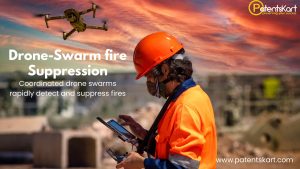The need for advancements in autonomous technology is stimulating. Memory and processing power have been maintained to improve exponentially more affordable. Still, the amount of data to process has collapsed, making it nearly difficult for traditional data interpretation techniques to provide up-to-date and cost-effective direction. Whether the data appears in real-time or is obtained and stored for more advanced analysis, the demand for
systems that can produce valuable penetrations from masses of raw data will only rise.
An Introduction to Machine Learning Algorithm and Neural Networks
Most of the technology that exists today works under inputs and outputs. In this case, a human supplies the input data, and its production is computed by a computer or software. Notify that it is still essential for a human to be present in this situation in the process.
In contradiction, we have machine learning, whose name accurately means future actions and
estimates learned by a machine without any human interference. In this case, the device provides the input and output.
A Machine Learning algorithm is a way of analyzing data. A neural network is an algorithm meant to give information the same way a human brain does. For example, a neural system can look at images and identify certain elements, like pixel colors and arrange them according to their appearance.
Neural networks are formed up of nodes. A node is an individual estimate where an algorithm indicates the importance of input information. The sum of that data is then passed through the activation function, which concludes what, if anything, is done with the product.
Consequently, neural network technology is more valuable to organizations large and small, addressing it as a top target for intellectual property protection. Unfortunately, however, several misunderstandings have emerged concerning the patentability of neural network technology.
Significance of Machine Learning
Machine learning has come a significant way, from simplistic pattern identification to hitting top professionals. Machine learning or ML is a term to incorporate algorithms that use statistics to find and utilize patterns in digitally saved data, such as numbers, words, images, etc.
Machine learning has witnessed its applications expand to various other areas, such as in private assistants like Siri, Alexa, Cortana, in diagnosing fatal diseases, self-driving cars, promoting pharmaceutical drugs, and so on. The technology is growing universal due to its broad reach for purposes that are being discovered every day. An emerging application of this technology is in the discovery of more latest technologies.
Apart from the moral and ethical issues encompassing this technology, it is crucial to approach the subject of the
protection of inventions acquired through this technology.
Professionals today have attained tremendous expertise with information accumulated over thousands of years and countless amounts of intentional practice. Machine learning is comparable to this kind of practice.
In machine learning, the machine is provided a set of algorithms that assists it in deciding what is genuine and wrong. The machine then plays and explains a large number of data/games while applying those parameters. Like how individuals learn to find patterns from a given data set, the machine mixes the data provided and ultimately assumes models and forms plans.
While traditional programming opportunities with a collection of instructions are applied to data to produce the desired output, the computer is left to investigate the preexisting outcome to devise a set of instructions to apply to the wanted information on its own in machine learning.
Since machines are not susceptible to weakness, unlike humans, and due to the variation in speed of electric signals conveyed through metal conductors and neurons in the human body, the machine can make up for endless hours associated with humans in a matter of weeks.
Given adequate data and time, a computer can exceed humans in any field through machine learning. It is applicable to note that a computer can only accomplish expertise in one area through machine learning.
Significance of Neural Networks
Neural networks, which are many courses of machine learning algorithms, can achieve multiple responsibilities. The applicability of neural networks only extends the relevance of this technology to many other assignments and areas. Neural networks are still expanding since the number of layers is restricted today due to computing power. However, this has not hindered its applications in other fields.
Patentability of Machine Learning Inventions and Neural Networks
The utilization of our concern is the application of this technology for creativity. Machine learning and neural networks have become widespread among scientists to formulate their inventions.
This technology has especially become successful in medicine and pharmacology, where a new class of diagnoses, methods, and medications are being devised by machines or with the aid of such devices. The technology is also being used in other physics and engineering fields to build new exercises and creativity. With the improvements in neural networks, the extent of creativity will only increase.
Machine learning algorithms themselves are patentable under being analytical techniques. This means that inventions that merely use the algorithm to develop a pattern or a mixture of values for certain variables for innovation cannot be patented.
On the opposite side, machine learning algorithms with a technical aspect and practical purpose can be patented.
The algorithms that are a portion of the invention, which is industrially relevant, can be secured in the past.
However, this devises one issue pending. Can inventions generated by machine learning models be protected by the prevailing intellectual property laws? If yes, who would profess its ownership? This issue is still up for discussion, though the law protects intellectual property created by humans or persons. However, presently this law is unclear and uncertain in this regard.
Concluding Words
Machine learning is still in its origin and cannot replace inventors. Still, these results cannot go unaddressed and require urgent consideration as the technology is burgeoning and growing in various fields. It will be discussed whether laws will give answers to such issues over the following years.
There are two critical points from the USPTO guidelines and the flourishing ML-based patent purposes. Firstly, focus on the specifications for how the wanted result is accomplished. For example, the EPO guidelines require a similar innovative step and an additional special effect relative to the USPTO specifications for ML patents.
Secondly, be careful when discussing particular mathematical comparisons within the claim language. As neural networks and machine learning technologies become more and more universal, innovative companies outside the software industry are well-advised to investigate patents in this space. Choosing knowledgeable and experienced artificial intelligence patent counselor(s) may help ensure flourishing patent holdings improvement.







